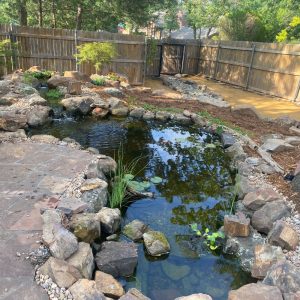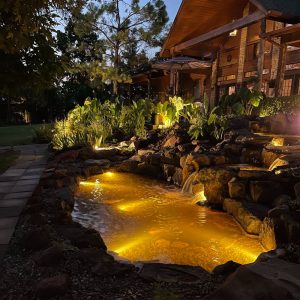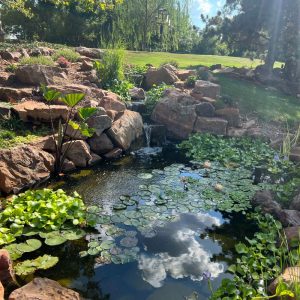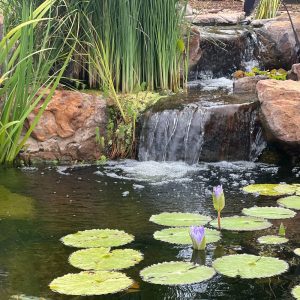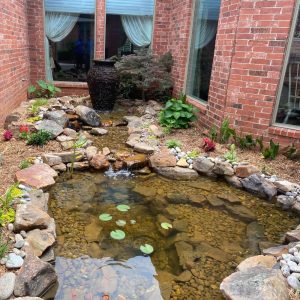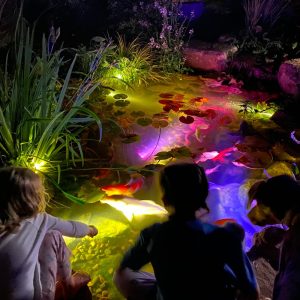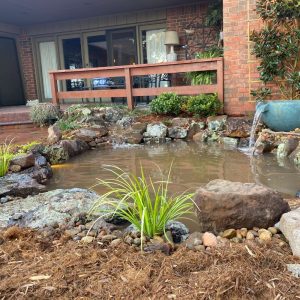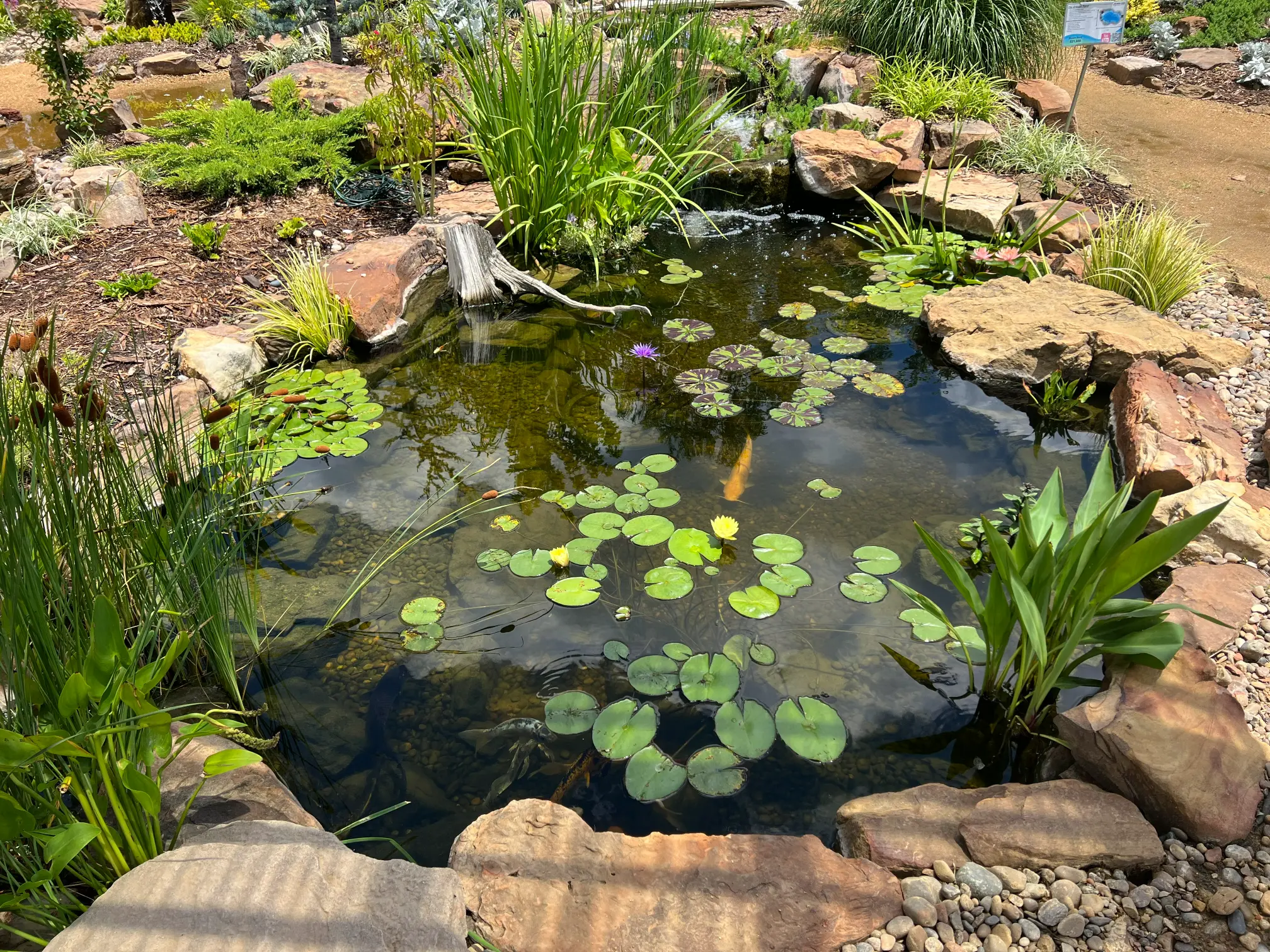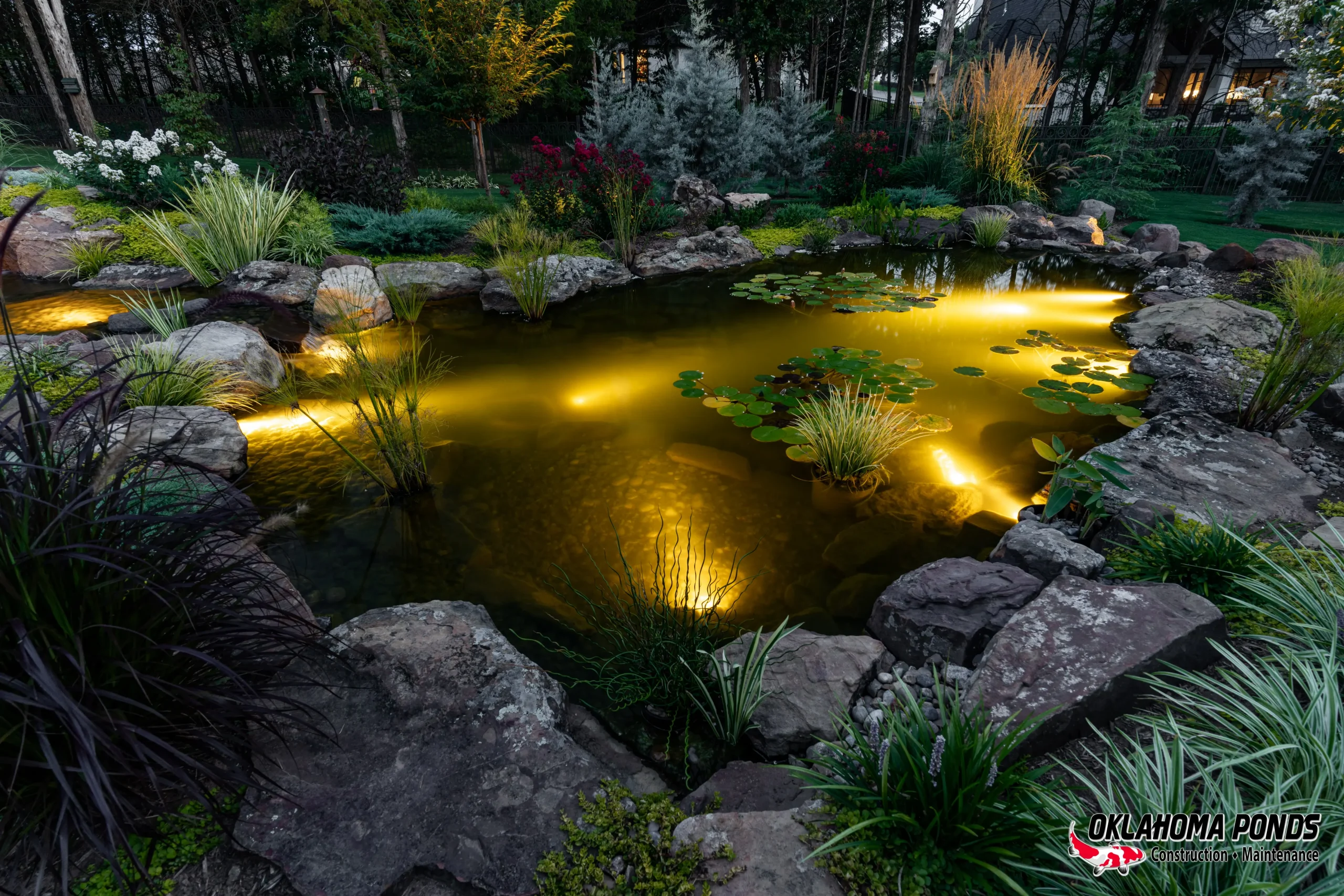Request Your Koi Pond Consultation

What Makes A Koi Pond Great?

Every element we incorporate into one of our koi ponds serves a very specific purpose.
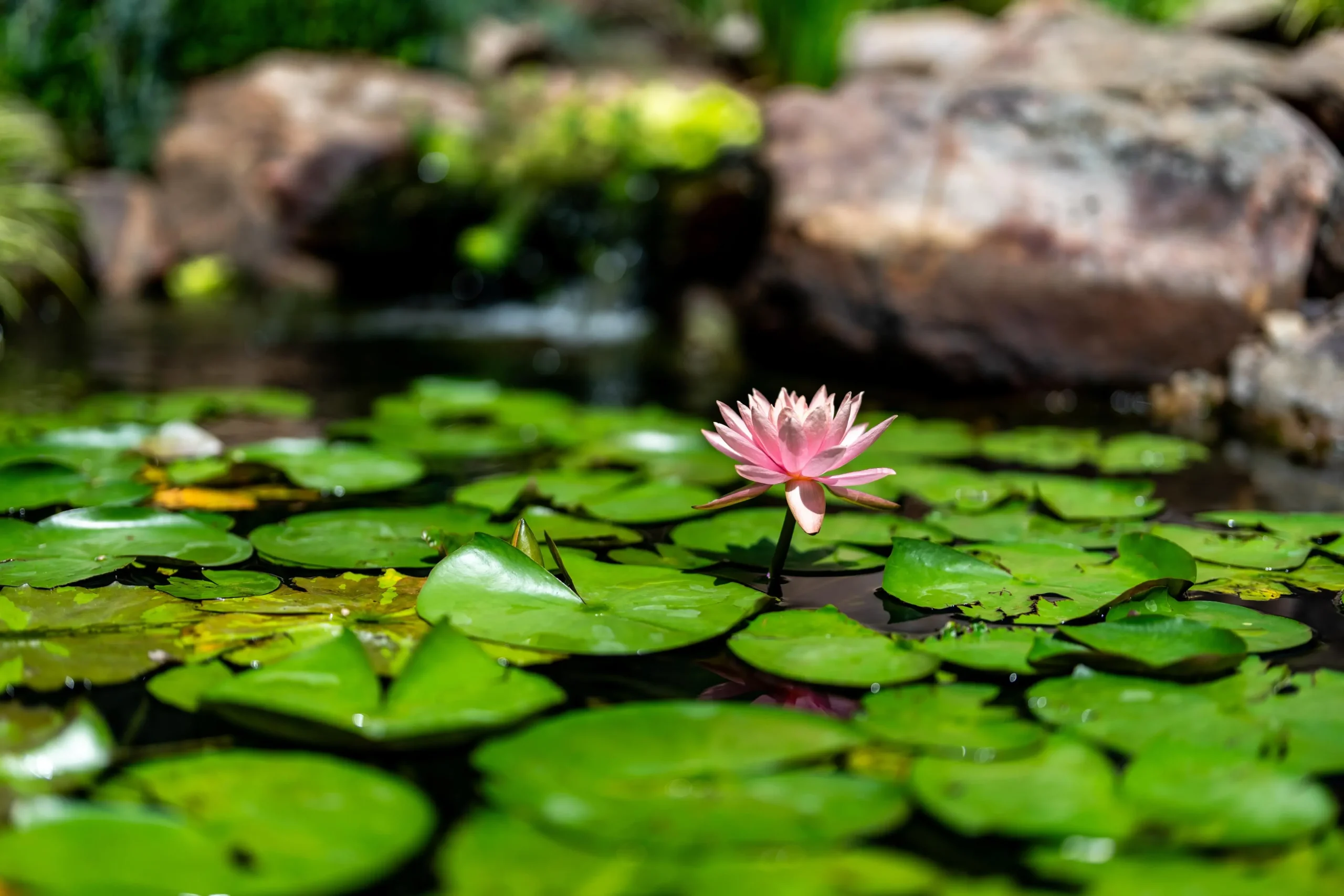
Aquatic Plants
Aquatic plants play an important role in your koi pond, as they provide a variety of benefits to both the fish and the ecosystem. Some of the key roles that aquatic plants play in a koi pond include improving oxygenation, supporting filtration, creating fish habitat, and enhancing the appearance.
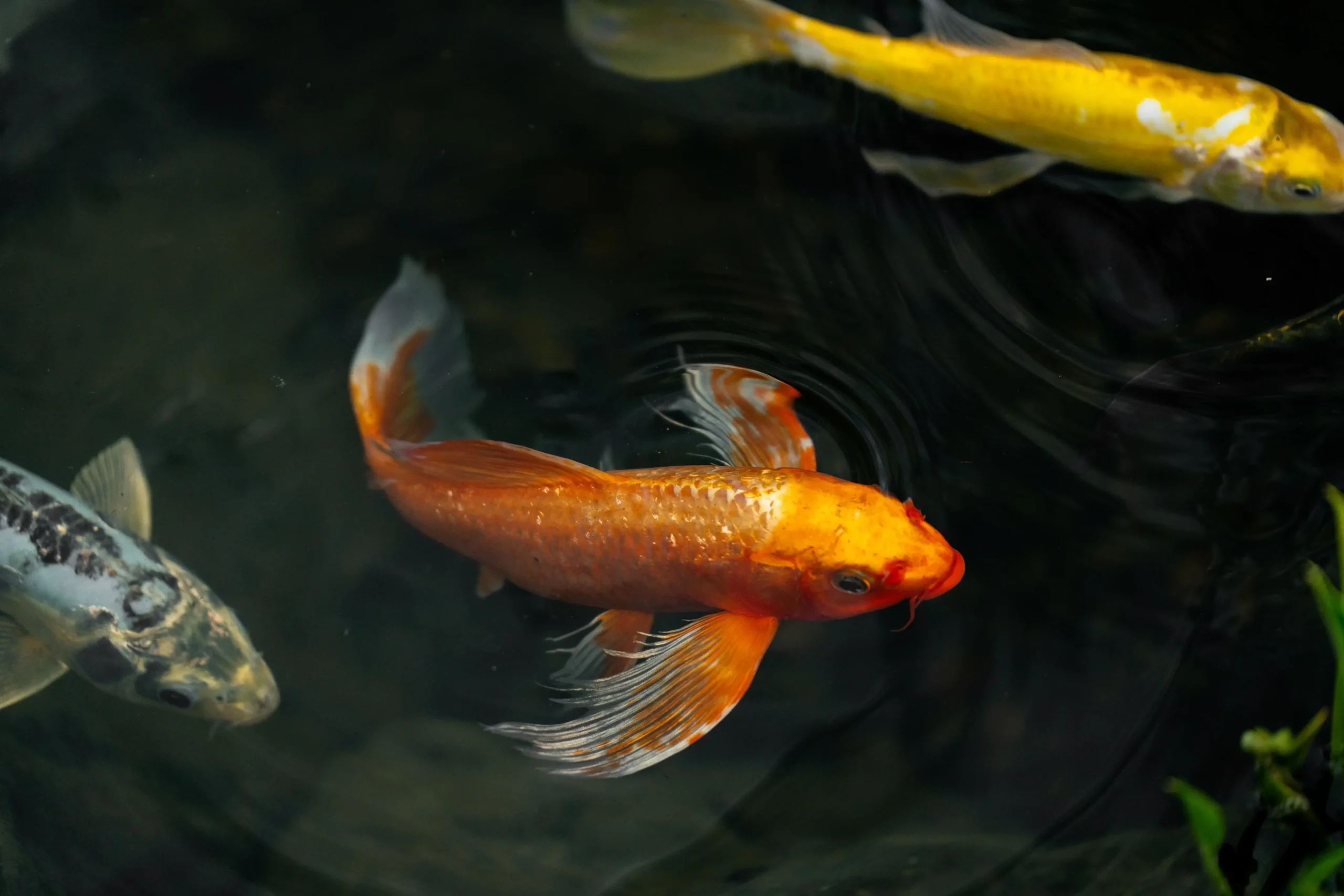
Fish Caves
Fish caves can serve several important functions in a koi pond. They can provide a sense of security for the fish, which can help to reduce stress and promote healthy growth. They can also help to protect fish from predators and can provide a shaded area where fish can retreat from the sun and heat.

Filtration System
Koi ponds require proper filtration systems to ensure the water remains clean for the fish and plants. Filtration helps remove debris, waste, and excess nutrients, which can lead to poor water quality and the growth of harmful bacteria. There are a few different types of filtration systems including mechanical, biological, and chemical filtration.
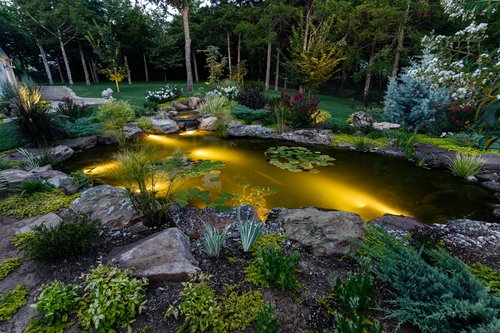
Pond Lighting
Koi pond lighting can be an important aspect of designing and maintaining a koi pond. Lighting can not only enhance the visual appeal of the pond, but it can also serve practical purposes such as providing light for the fish and allowing for evening viewing.

Water Features
There are a variety of water features that we can integrate into your new koi pond. These can include cascading waterfalls, water fountains, bubblers, and more. These all add ambience, and improve the aesthetics of your koi pond while adding the peaceful sounds of moving water.

Surrounding Landscape
A koi pond on it's own is an exciting landscape feature. When you surround your pond with complimentary landscaping it takes your natural display to an entirely new level. The right combination of plants, and natural elements such as rock and driftwood really set the stage.
Frequently Asked Questions About Koi Ponds

Here's What Our Customers Say...

Absolutely an A-1, excellent shop and personnel to deal with in all regards. Jay at the front desk has experience and knowledge to answer pond and fish questions and help you in building your own water feature and stocking it with koi and gold fish. Along , with Sandy at the front desk, they've made all my dealings with them a pleasure. As to service calls and personnel Colby has been my primary service contact and is competent and has a background and experience working in all aspects of the pond business from installation and maintenance to necessary chemical knowledge and fish - a pleasure to work with and gain knowledge from him. All the personnel have been a pleasure to work with and if you're looking to build a pond, this is the place to go and these are the people to talk to about any project you might have. I talk from my experience with a 10'X14' koi pond with 6 large (16"+) koi and numerous smaller koi, mosquito and growing babies. One of the pleasures in life is to simply go out and enjoy the pond/ waterfall/ and fish in the peace and quiet of the early morning and meditate - total relaxation that starts the day off right. Thanks to Jay and his staff.
Best place to buy Koi! Great selection and best prices! We love this place!!
If you want a koi pond, these are the guys to use. They did a great job and we love our new pond. The fish seem to love it too.
Our pond was PITIFUL! I’m old and recovering from a surgery and unable to take care of it any longer, so, it was either get help or have it filled in! Thank Heaven I found Oklahoma Ponds! Their serviceman Colby came out and within about 6-7 hours my Koi think they’ve died and gone to Heaven! What a job he did! I barely recognize the pond… it is BEAUTIFUL again. I can’t say enough about this company, except if you’ve got a pond… you need Oklahoma Ponds.. THEY KNOW WHAT THEY ARE DOING!
I always go here for chemicals and advice on caring for my Koi pond
Probably like alot of people, we "inherited" a koi pond / waterfall with the house we bought. And like alot of people, we were completely clueless about how to take care of it. Luckily I found Jay and he's been helping me out with every situation imaginable for about the last 5 years. He is quickly responsive and I've always felt like he is just as invested in my pond as I am. His crew is always great, they are personable, have the knowledge they need, and they always go the extra mile and make sure we are happy and that all my questions are answered. If you are in my boat, Jay is a great and very involved educator and truly wants you to understand your pond and your fish if you have them. One thing I appreciate is that he can communicate at whatever level you happen to be at. If you're a newbie, he won't overload you with too much information. He will work with you at your pace and tell you what you need or want to know at any given time.
The folks who work at Edmond Ponds are courteous and very knowledgeable. I would hire them again for any pond maintenance and everyone should visit their store. Such beautiful plants and koi!
Colby came out and cleaned up our pond that’s about 1000 gallons big! We had just purchased our home and it had been vacant for close to a year. So we have no clue when it was scrubbed and cleaned up last. So as you could imagine a big job to clean! Colby worked hard and got it all cleaned up. We have 15 goldfish that survived the winter! Thank you! Now to do the landscaping, get some koi and lights! 😃






